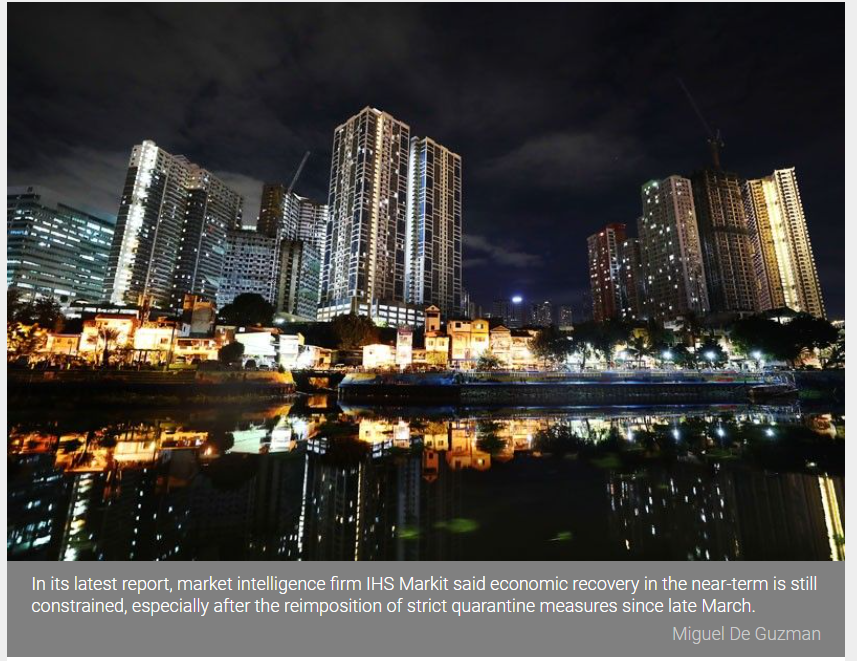Philippines: Less buoyant recovery seen
MANILA, Philippines — The country’s road to economic recovery continues to dim as COVID-19 cases remain on the rise and vaccine rollout is being hampered by lack of supply.
In its latest report, market intelligence firm IHS Markit said economic recovery in the near-term is still constrained, especially after the reimposition of strict quarantine measures since late March.
“It is likely to be less buoyant than previously expected, with renewed pandemic control measures constraining the momentum of growth recovery in the near-term,” IHS Markit Asia-Pacific chief economist Rajiv Biswas said.
“While the economy is still expected to show a positive growth rebound in 2021, the near-term outlook has been dampened by the sharply rising wave of new cases,” he said.
In fact, he noted, the first quarter was already disappointing after gross domestic product (GDP) shrank 4.2 percent, extending the recession since last year.
IHS Markit has retained its GDP forecast for 2021 at five to six percent, below the government target of six to seven percent.
However, stronger GDP growth is expected by 2022 as the pandemic is gradually contained by a widening vaccine rollout, resulting in more normal economic conditions.
“Vaccine rollout in the Philippines has also been constrained by lack of sufficient supplies of imported vaccines,” Biswas said.
Latest data showed that only about one million Filipinos have been inoculated. The government has set an ambitious target of 70 million Filipinos to be vaccinated by yearend.
The country continues to face challenges in securing COVID-19 vaccines due to several factors, including a sharp rise in cases in other countries, logistics problems as well as vaccine nationalism.
Although economic conditions have been gradually improving, IHS Markit emphasized that the recent severe escalation in the pandemic has created renewed uncertainty about the momentum of economic recovery in the near-term.
A reflection of this is the sharp fall in the manufacturing index, which was largely attributed to enhanced community quarantine measures that were undertaken to control the spread of the disease.
As a result of tightening lockdown measures, many clients suspended their operations, with demand faltering for the first time since December 2020.
“Domestic demand was especially subdued with the rate of reduction among the sharpest in the series. However, export sales to European markets which have begun to gradually reopen, helped to narrow the pace of contraction for manufacturing export orders,” Biswas said.
Source: https://www.philstar.com/business/2021/05/31/2101934/less-buoyant-recovery-seen


 Thailand
Thailand




